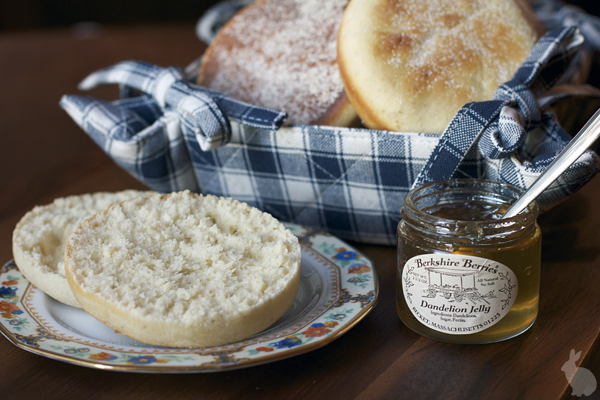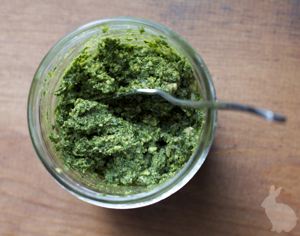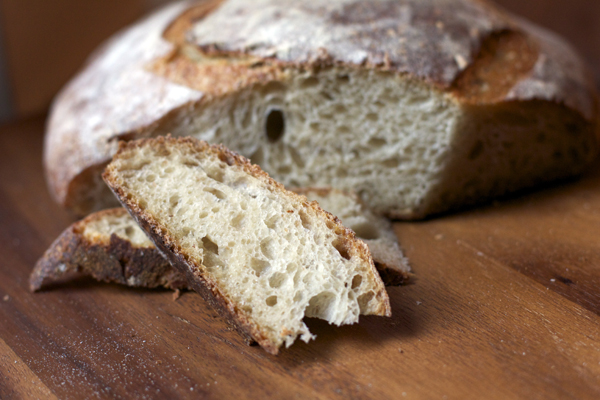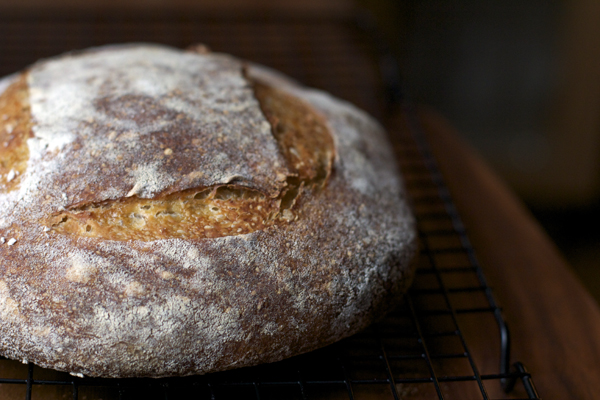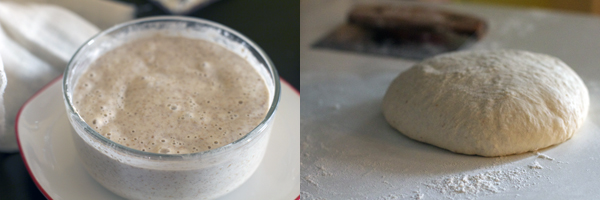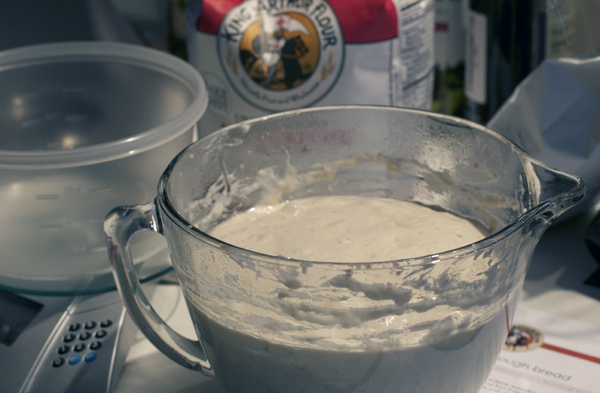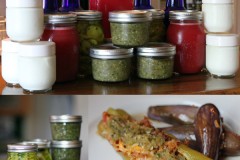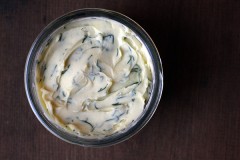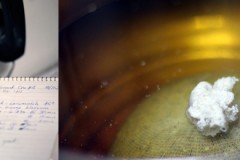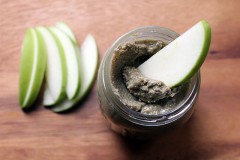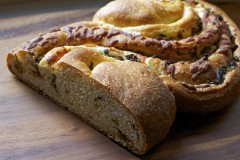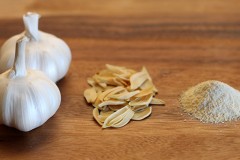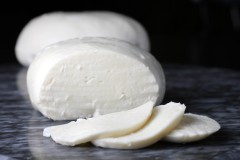More than a month ago, I ordered a sourdough starter and some English muffin rings from King Arthur Flour, and while the sourdough has subsequently been put through its paces, those eight metal rings have just been sitting in the pantry, taunting me whenever I open the door to retrieve some other item. The thing of it is, most of the English muffin recipes I’ve found need to be cooked on a griddle that I do not have, and the only pan in my arsenal that would suit can fit a grand total of two of these biscuit holders simultaneously. That seemed a recipe for frustration, no matter how you shaped it.
Meanwhile, there were recipes out there for baking them, but they weren’t for sourdough English muffins, and I was peculiarly stuck on this point. The clock was ticking down on me yesterday, my available slot for proofing and baking shrinking rapidly as my fingers Googled (you can feel the Jason Bourne-like tension here, right?) when I discovered this recipe on the King Arthur site and realized it met my desires of the moment perfectly. All-in-one-bowl mixing! Only a smidge more than an hour rising time! This morning, the fluffy little muffins fresh out of the toaster also hit my breakfast desires right on the spot, so we’re going call this one a clean win. If I had to sacrifice the cute little nooks and crannies to get here, so be it. Next time…
The griddle question, however, remains. Being vegetarian, I don’t have call to cook up sausage patties or suchlike, but I would love to dig deeper into Indian flatbreads, which also make use of a large, hot surface. Any shopping suggestions?
Sourdough Breakfast Biscuits
from King Arthur Flour
1 T instant yeast
1/2 cup warm water
1 cup sourdough starter, refreshed
2 tablespoons sugar
2 tsp. kosher salt
1/2 cup dried milk
3 cups AP flour
2 T oil
1 egg
cornmeal (for dusting)
Place yeast and water in a large bowl or stand mixer and stir to dissolve. Add all remaining ingredients (aside from the cornmeal) and knead, but hand or by hook, until a smooth dough has formed. Turn out onto a flour counter, cover with a towel, and allow to rest for 30 minutes.
After the initial bench rest, roll dough out (about 1/2 inch thick) to fit 8 3 1/2 inch English muffin rings. Cut out muffins. Place rings on the sheet and dust the inside of each circle with cornmeal. Place a round of dough inside each ring, dust the tops with cornmeal, and place a second baking sheet over top, balanced on the to of the metal rings. Allow to rise for 40 minutes.
Preheat oven to 375F. When rise is complete, bake muffins (still covered with second baking sheet) for 25 minutes or until tops are golden. Cool for 10 minutes on the sheet then remove rings and transfer to a wire rack.
The interior will not have all the nooks and crannies of traditional English muffins, but I split one with a fork and found the interior soft and chewy and quite satisfactory all the same.
I’ve toasted and consumed two more without a complaint, topped with some kale pesto. What can I say? I have a thing for leafy green condiments.
I used this Tastespotting recipe, though I substituted a teaspoon of nutritional yeast for the cheese.

